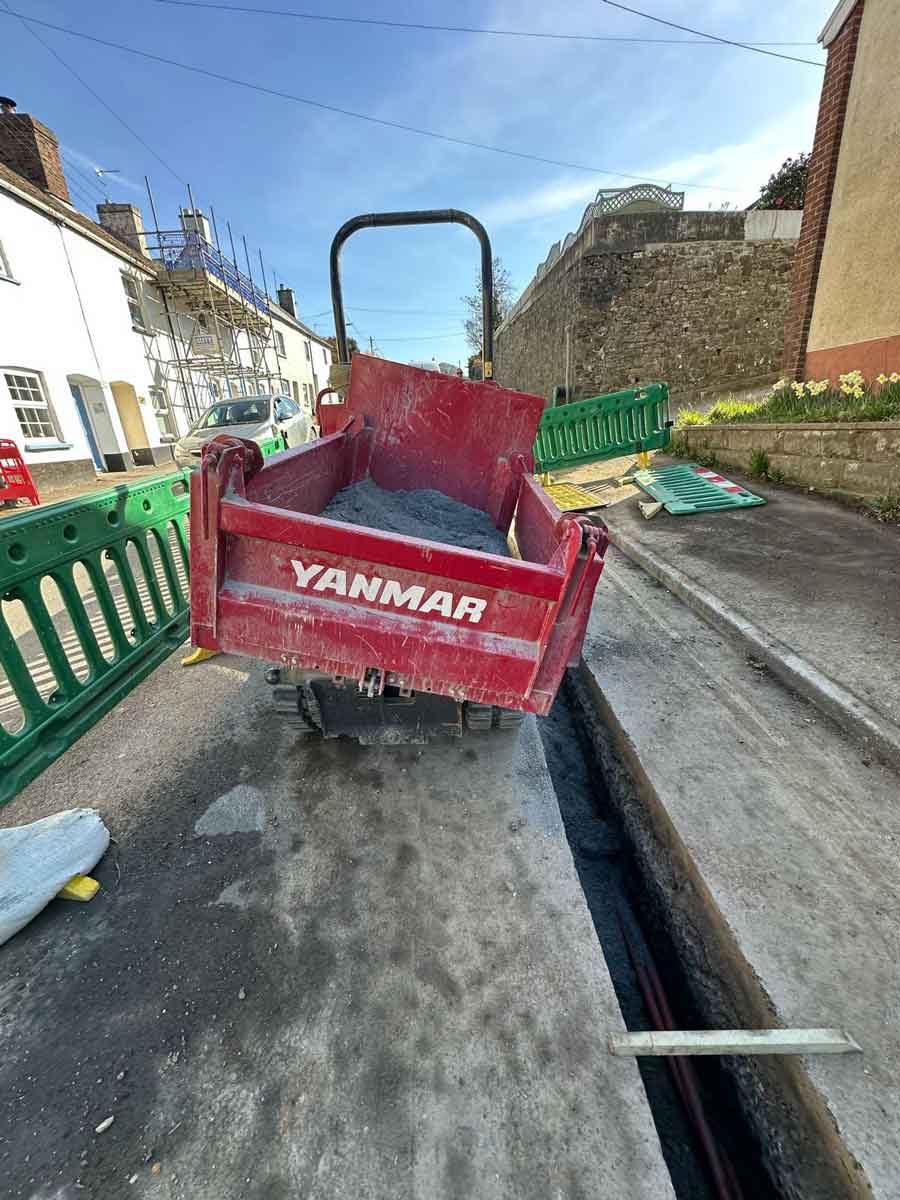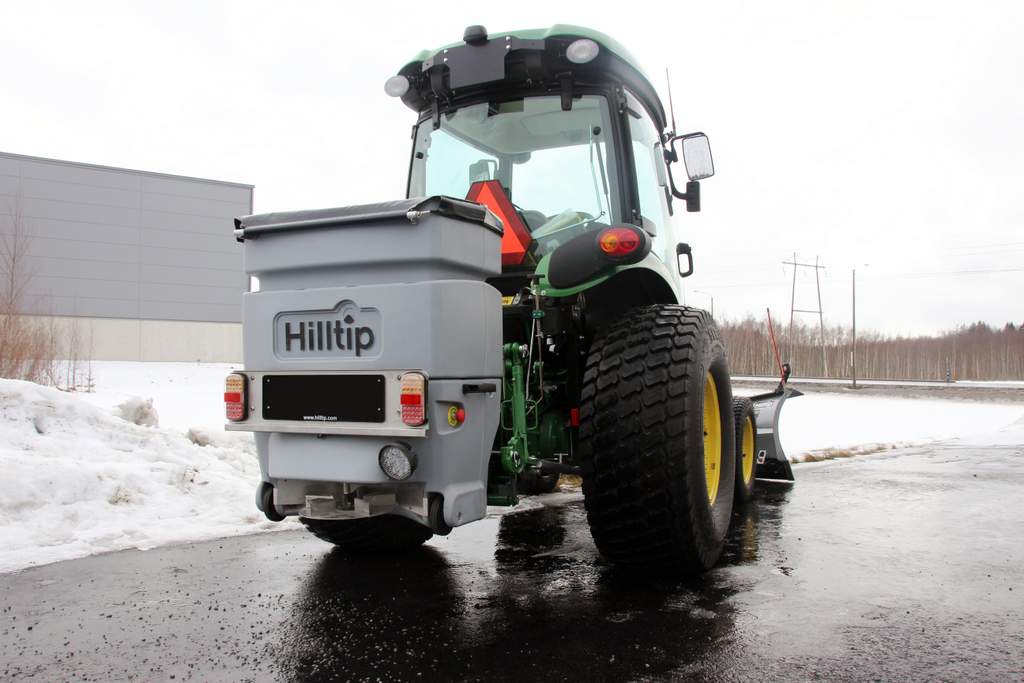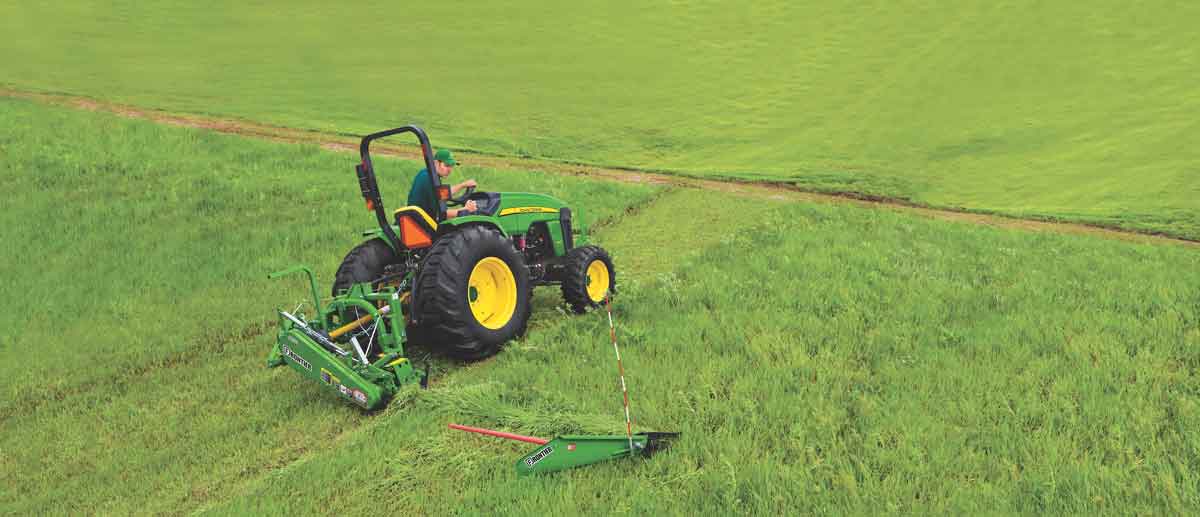Wheel Loader Attachments for Nurseries and Landscape Supply Yards

Nurseries come in all sizes. They include small boutique operations frequented by homeowners looking for the perfect spring tulip. They extend to large commercial-scale nurseries exclusive to landscape installers building entire communities. Nurseries also often sell hardscape supplies. To accomplish all the necessary duties, they need capable equipment. Machines that can move a large variety of materials, sometimes displayed in confined spaces, in the most efficient manner. That’s where compact wheel loader attachments come into play.
“Articulated compact wheel loaders are commonly used in nurseries for heavy lifting or frequent, repeated jobs,” observes Scott Britton, attachments marketing manager, Caterpillar. In fact, compact wheel loaders have become one of the primary pieces of equipment used in nursery yards. This is due to their size and versatility — particularly when attachments are added to the machines. Capable of loading and unloading trucks, moving pallets of heavy rock and stone and transporting trees, sod and mulch, compact wheel loaders perform a multitude of tasks with efficiency and ease.
“The debate over using a skid steer versus a compact wheel loader is its own conversation with many considerations,” Britton continues. “However, often, you’ll almost always find a compact wheel loader in a [nursery or landscape supply yard]. For Caterpillar, this means a Cat 903 through a 920. Most commonly, you’ll see a 903, 908 and possibly a 914, depending on yard size.”
Popular Applications for Wheel Loader Attachments

According to Darren Ashton, product manager of compact equipment at Volvo Construction Equipment, compact wheel loaders are “extremely versatile and make a great nursery go-to.” That’s because they can move dirt, mulch, sod, gravel, sand, large rocks, stone slabs, edging materials, plants and pallets. “If you need to load or unload something, a compact wheel loader can probably do it,” he confirms.
Emily Pagura, product marketing manager for John Deere, says its compact wheel loader lineup can be “incredibly versatile tools for a nursery” that are able to streamline operations in a variety of jobs. “Common uses include transporting large potted or balled trees, moving pallets of material like sod or bagged landscape rock and loading material like mulch.” She says they’re incredibly helpful for loading and distributing sod rolls and mulch for garden installations. They are also great for loading and unloading trucks and transferring plants, soil and supplies.
One of the most common operations in a nursery is loading loose materials. These include mulch, pea gravel or #56 stone one bucket at a time into a customer’s half-ton truck. Britton says that pairing a Cat 903 or 908 compact wheel loader with a dedicated Cat 1-yd mulch/landscape bucket eliminates guessing the load size. “At 56 in. in width, it’s designed to fit inside the bed rails, so there’s no concern about damage to the tailgate or cab,” Britton notes. For some customers, this could also involve bulk loading larger trucks or trailers with a much larger loader like a Cat 914 that has up to a 3.9-yd bucket.
Moving Trees: Nursery Forks, Scoop Buckets and Grapples

Another key operation at nurseries involves moving large orders of plants or trees too unwieldy to carry by hand. “Cat’s nursery forks allow loading three or more 28-in. root ball-size plants or up to a 54-in. root ball for larger trees,” Britton says. “This is a great attachment for nurseries frequently selling to commercial customers needing flatbeds or trailers full of plants at a time.”
An upcoming Cat nursery grapple features full articulation of tilt and swing for single root balls up to 54 in. This enables it to lay down a tree gently on its side for safe transportation to the installation site. Landscapers can also use this onsite when preparing to plant. Another unique, industry-specific attachment is a scoop bucket. These come in several varieties for different applications. They are commonly used to “pop” a plant out of the ground to be prepped for sale. Landscapers can also use these when removing trees from a yard project. This is only one set of compact wheel loader attachments.
Check out our Machine Heads video detailing John Deere’s 334 P-Tier skid steer and 335 P-Tier track loader.
Pallet Forks to Angle Brooms

Larger landscape supply yards may offer a variety of hardscapes for sale as well as palletized supplies. These include slabs of rock or smaller bundled cages, palletized and ready to go. “With the irregular shape of some hardscape materials, hydraulic adjustable pallet forks are a great addition to any yard,” says Britton. Pairing them with a compact wheel loader creates a high-speed, off-road forklift that can go anywhere onsite.
Wheel loaders are often used to clear ground. They also perform other site preparations necessary for planting as well as landscaping projects. “They aid in stockpiling soil and compost, ensuring materials are organized and easily accessible while helping maintain a clean workspace by removing debris and waste,” Pagura continues.
There are numerous attachments that can be used for nursery yard maintenance. To keep gravel even and compacted on nursery roads, Britton suggests a power box rake. It can “bust up the worn-in center crown, break up hard spots and make for an even spread of material.” He advises following that with a vibratory roller to pack down the gravel, producing a tight, consistent road surface.
“For yards with paved rows or parking lots, having a broom on hand to keep those surfaces clean and clear of debris makes for a better customer experience,” Britton continues. Finally, using a pickup or utility broom can aid in cleaning up spilled mulch, gravel or other debris. During the winter, “for those yards above the snow belt, run a snowplow or wing if [you] have a suitable location for stockpiling snow. If not, a snowblower may be the way to go.”
Sizing Up the Selections

The dealer or OEM can help with the choice of attachment. It’s based on the size of the compact wheel loader and the tasks it will be expected to perform. For example, the choice of bucket may depend on your soil type or material density. It’s also crucial to assess what the loader’s hydraulics can handle. Attachments should be selected to fit the machine and tackle the task at hand, Deere’s Pagura states.
“While some attachments are versatile and will do a wide range of work, others are more specialized for specific tasks.” By assessing the work that needs to be done, you’ll be able to identify what gaps exist in the capabilities of your current lineup.
Furthermore, Pagura continues, it’s essential to consider the capabilities of your machine when purchasing attachments. “A machine without high flow won’t effectively operate an attachment that requires it, and using a bucket that isn’t properly sized for the machine and material can hinder efficiency.”
Task > Tool > Machine

While the perfect method of matching machine and attachment is adhering to the “task > tool > machine” mantra, Britton says the story more commonly goes, “I have a machine and need to do this job. What attachment do you have that can help me?”
Most manufacturers of compact wheel loaders share the same interface as the skid steer family (see our coupler story). Therefore, there’s a huge variety of attachments available. A mulch/landscape bucket has evident uses. But, if you’re not selling loose materials, you wouldn’t have much need of it, according to Britton.
“Dedicated attachments like the nursery forks or nursery grapples require a quick review of your customer base — homeowner, commercial or a bit of both — how much product you’re moving daily and how your retail yard is laid out,” Britton continues. Having clean, organized rows customers can browse not only makes for a better shopping experience, it also allows for the movement of bulk materials when selling four or more plants at a time. The forks can slide down rows to pick up multiple products at once. Having the product at an angle versus the walking/driving rows means fewer turns from the loader, which means less disturbance to the typical gravel rows in most yards.
Other Questions about Wheel Loader Attachments

“Once you understand the attachment needed, the next question is, will it work with my machine?” Britton queries. The first thing to consider is whether the machine can handle the load you need to pick up. Reviewing the manufacturer’s rated load, commonly found in their spec sheet, is important.
Additionally, understanding material densities is key. Most attachments in this space need only standard flow hydraulics. They may need an electrical connection for diverting flow for more specialty multi-function tools. For example, a pallet fork only needs flow, but a nursery grapple will need to divert the primary flow to the tilt and swing functions. This typically requires a rocker switch in the cab and an electrical connection at the tool.
Lori Lovely is a freelance writer for Compact Equipment.




